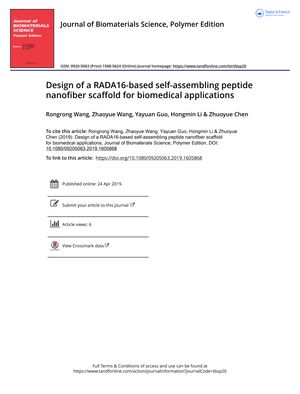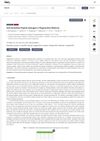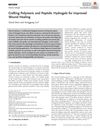Design of a RADA16-Based Self-Assembling Peptide Nanofiber Scaffold for Biomedical Applications
April 2019
in “
Journal of Biomaterials Science, Polymer Edition
”
RADA16 self-assembling peptide nanofiber scaffold biocompatibility low immunogenicity cell proliferation cell differentiation tissue engineering nerve repair bone healing skin defect repair regenerative medicine rapid hemostasis drug delivery systems 3D cell culture tumor research drug development active peptides growth factors peptide scaffold biocompatible scaffold cell growth tissue repair skin repair hemostasis drug delivery cell culture tumor model drug research peptides

TLDR RADA16 is a promising material for tissue repair and regenerative medicine but needs improvement in strength and cost.
The document reviews the design, modifications, and biomedical applications of RADA16, a self-assembling peptide that forms a nanofiber scaffold with excellent biocompatibility and low immunogenicity. RADA16 scaffolds support cell proliferation and differentiation, making them useful for tissue engineering, including nerve repair, bone healing, and skin defect repair. The document highlights the potential of RADA16 and its fusion peptides in regenerative medicine, with modifications enhancing its functionality for specific applications such as rapid hemostasis and drug delivery systems. RADA16-based materials have been combined with other polymers for improved mechanical properties and have been used in 3D cell culture models for tumor research and drug development. Challenges such as complex preparation, lack of mechanical strength, and high synthesis cost are noted, with suggestions for future research to include longer sequences and the addition of active peptides or growth factors to enhance functionality.


